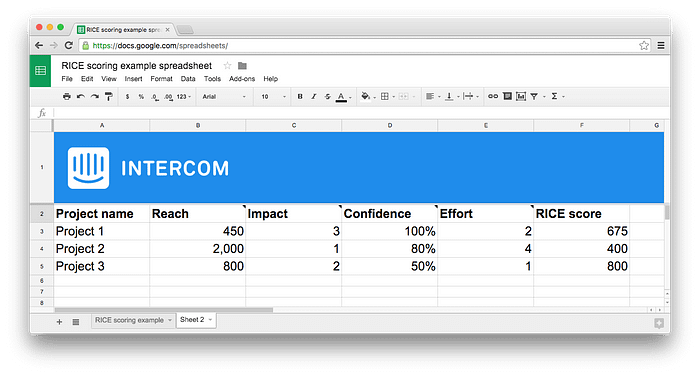Is prioritization the secret ingredient?
According to the definition from Wikipedia: “Prioritization is a concept that shows importance, priority. For example, the priority of actions determines the order of their execution in time. ”
From the definition it becomes clear that the main purpose of prioritization is to understand“ which is more important than what ”.
It would seem that difficult? I chose those tasks for implementation that would increase the company's metrics, and the rest were removed deeper into the backlog until “better” times. Sounds really easy when you have few tasks.
But what to do when there are more tasks?
Imagine a typical situation for product manager Peter, which happens once a quarter.
Peter comes out of the meeting room with his laptop under his arm. Exhalation is facilitated, the mood is high. Peter has just finished a multi-hour meeting with the team to generate ideas and tasks for the next quarter. At first, of course, it went rotten, but soon the team had an epiphany and ideas flowed like a river. "We are doomed to success" - thought Peter, having come to his place. Now it remains only to choose where to start the victorious march. And here the enthusiasm noticeably drops before the list:
1) A / B test of landing page 1 and landing page 2
2) Dashboard design
3) CRM integration for the sales department
4) Add a knowledge base for users
.........
27) Welcome bonus when registering a user
Well first to hire? And the second? Well then? Why not the other way around?

Of course, all of them are unlikely to be implemented. It all comes down to either time or money. But how to properly evaluate and filter out features?
There are various approaches to assessing a particular task. Below we will analyze the main ones.
Fast prioritization. "Am I doing bullshit?"
This method represents the “popular” opinion of the team. This is especially useful in many cases when the “features” span multiple categories. One feature for the support department, another for the sales department, the third for marketing, etc.
In this approach, we use the Poker Planning method:

The process itself looks like this step by step:
- The product manager and the team discuss the benefits of each feature and give their grade from 1 to 3. Where 3 is “super useful” and 1 is “minimal”. The average value is recorded in the table.
- We repeat the same with the cost estimate. Important : the costs should be discussed not with a colleague in the kitchen, but directly with those who perform the task.
- We get the benefit / cost ratio and see that tasks 1 and 3 are in the lead, which means they can be taken to the next sprint.
Fast prioritization. "Am I doing bullshit?"
This method represents the “popular” opinion of the team. This is especially useful in many cases when the “features” span multiple categories. One feature for the support department, another for the sales department, the third for marketing, etc.
In this approach, we use the Poker Planning

method.The process itself looks like this step by step:
- The product manager and the team discuss the benefits of each feature and give their grade from 1 to 3. Where 3 is “super useful” and 1 is “minimal”. The average value is recorded in the table.
- We repeat the same with the cost estimate. Important : the costs should be discussed not with a colleague in the kitchen, but directly with those who perform the task.
- We get the benefit / cost ratio and see that tasks 1 and 3 are in the lead, which means they can be taken to the next sprint.
RICE

This approach was developed at Intercom. After the tests, the guys stopped at 4 important factors:
- Reach - how many users will we improve their lives?
Reach is measured by the number of people / events over a period of time.
- Impact - how much will we improve the lives of our users
Impact is difficult to measure accurately. Therefore, for convenience, you can make the following options: 3 for "strong impact", 2 for "high", 1 "for medium", 0.5 "for low" and 0.25 for "minimum".
- Confidence - How confident are we that we can improve anything at all?
There are 3 levels of confidence:
100% - high
80% - medium
50% - low
- Effort - how long will it take for us to implement our plans?
It is mainly measured in “person-months”. That is, the amount of work that a person can complete in 1 month. Use integers whenever possible. If 1 month, then the value is 1.0. If it takes less than a month, then the value is 0.5.

Further, after we multiply the first 3 parameters by each other and divide by efforts, we get the final score. The higher the score, the more important is the implementation of a particular task.
MoSCoW
The MoSCoW method allows you to divide all activities, "wishes" and newly arrived tasks into 4 categories, which is much more effective.
- Must is what needs to be done in any case. Without completing these tasks, the product will not work in principle.
- Should are not the most important requirements, but they must also be met. Naturally, after the implementation of "must".
- Could - Desirable requirements that can be made if there is time and resources.
- Would - requirements that I would like to make, but they can be ignored or carried over to the next releases without harm to the product.
This is where the abbreviation MoSCoW comes from. Let's analyze this approach using the example of renovating a new apartment in a new building:
- M - we make electricity, piping, glue wallpaper, lay tiles or parquet. We install a toilet, a bath, make a kitchen and, at least just a bed, in a bedroom.
- S - we buy furniture, wardrobes, refrigerator, microwave oven, table, chairs, washing machine.
- C - installation of a dishwasher, additional cabinets, a tap with a pull-out hose, lighting around the cabinet or on the ceiling.
- W - servos for drawers, lighting inside the cabinets, a rotating shelf for a corner cabinet, an acoustic system, a mosquito net on the windows, underfloor heating, a video intercom.
Pros : simple, fast, understandable to the customer (if it is not a technical specialist)
Cons : not very objective, technical complexity and risks are not taken into account
ICE Scoring: How Does It Work?
Calculate the score for each feature or idea according to the formula:

- Influence measures how much your idea will positively affect the key metric you are trying to improve.
- Ease of implementation is about ease of implementation. This is an estimate of how much effort and resources it takes to implement this idea.
- Confidence indicates how confident you are in the impact ratings and ease of implementation.

ICE uses a scale from 1 to 10 to ensure that all factors balance the overall score. You can mean by 1-10 what you want, as long as the values are consistent with each other.
As an example, let's apply this to the Dashboard Widgets feature:
- Impact : How effective will it be? What will this give our users and their goals and objectives?
- Ease of Implementation : How easy will it be to develop, test, and run this feature?
- Confidence : How can I be sure that this feature will lead to the improvement that I described in Impact and will take so long?
Disadvantages of ICE
ICE Scoring has sometimes been criticized for its subjectivity:
- the same feature can be assessed differently by the same person at different times. This may affect the final priority list.
- if different people evaluate a feature, they will all evaluate it differently.
- team members who want their features to be prioritized can manipulate the results to get approval.
Summary
The approaches to prioritization described in the article are not the only ones, but almost all of them are based on the same principles.
In conclusion, I will give a short prioritization algorithm:
- Find the TOP 3 key metrics for a specific service.
- Collect hypotheses for pumping these metrics: from the backlog or outside it.
- If the market is new, use quality methods: ask potential users what they are using now.
- Do a quick assessment and discard the "weak" features.
- Conduct a detailed assessment of the remaining features.